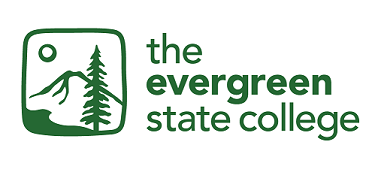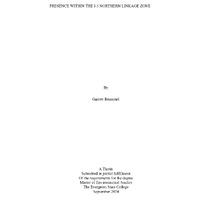Habitat Connectivity and Interstate-5: Site Evaluation of Wildlife Presence Within the I-5 Northern Linkage Zone
Item
- Title
- Description
- Date
- Creator
- Identifier
-
Habitat Connectivity and Interstate-5: Site Evaluation of Wildlife Presence Within the I-5 Northern Linkage Zone
-
Interstate 5 (I-5) is a barrier to wildlife habitat connectivity in the southwest portion of Washington State. There is a significant lack of habitat connectivity surrounding the I-5 corridor between Olympia, WA and Vancouver, WA. This lack of connectivity in the region paired with the barrier imposed by I-5 threatens to functionally sever wildlife connectivity between the Cascade Mountains to the Washington coast. Despite research showing wildlife overpasses improve connectivity and reduce costly and dangerous Wildlife-Vehicle Collisions, there are currently no wildlife overpass crossing structures over I-5 in this region. Habitat corridors or linkages act as connective pathways between larger habitat areas for native fauna impacted by human caused habitat loss and fragmentation. Recent habitat connectivity models have identified several linkage zones as the last best chance for reconnecting and preserving connectivity across I-5. One of these linkages, the I-5 Northern Linkage Zone, offers the most direct path for wildlife between the Olympic Peninsula and east of I-5. This linkage encompasses several unique wildlife areas and Priority Habitat types in the South Puget Sound lowlands. In addition to the habitat connectivity models used to identify this linkage, there are other methods available to examine wildlife connectivity. More research is needed within these I-5 linkage zones near I-5 to determine both wildlife abundance and species diversity on both public and private lands.
This study took place within the I-5 Northern Linkage Zone on a 120-acre private property bordering the eastern shoulder of I-5 near Rochester, WA. Using wildlife data collected with remote cameras this study recorded the species diversity and abundance on site beginning in October 2020. This study found wildlife on site that could benefit from the creation of nearby wildlife crossing structures. There were trends in species detection by season, time of day, and habitat type. The methods employed in this thesis can be used to assess wildlife presence, contribute to wildlife connectivity data, and increase partnership with private landowners whose land management practices impact the habitat that creates these wildlife corridors.
-
September 2024
-
Garrett Brummel
-
Brummel, Garrett_MES Thesis_September 2024
Position: 87 (47 views)

